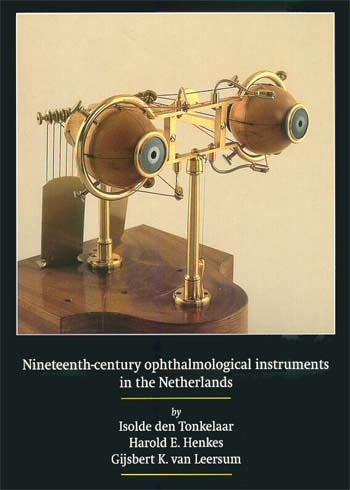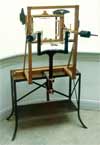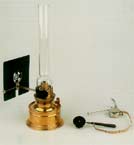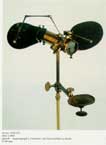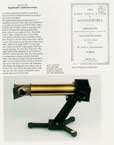Eye and
Instruments
Nineteenth Century Ophthalmological Instruments
The founders of the
collection:
The
collection of 19th century ophthalmological instruments and apparatus which is
described and illustrated in this book, has its origin in the scientific work,
which was performed by, or under the direction of, the two most important 19th
century Dutch ophthalmologists: FRANCISCUS CORNELIS DONDERS (1818-1889) and
HERMAN SNELLEN (1834-1908).
Donders was a very versatile man who, as young military doctor, demonstrated a
capacity for scientific work, in particular physiology. While working, from
September 1842, as lecturer at the Military Medical School, he translated
German scientific books to supplement his income, and in this way was
introduced to the physiology of vision, of which little was known at that time.
Donders
attracted attention by his scientific interests and teaching ability; in
October 1847 he was made Professor Extraordinary of Utrecht University as there
was no vacant chair. The chair of physiology, which would have been his choice,
was already taken, so he had to content himself with forensic medicine,
hygiene, general biology, pathology and ophthalmology, in which subject he
specialised in the physiology of vision.
An
important influence in Donders career was his visit to the Great Exhibition in
London in 1851. There he met the leaders of the ophthalmo-logical world of that
time: William Bowman (1816-1892) and Albrecht
von Graefe (1828-1870). With each of these men Donders formed a lifelong friendship
and it was in London that he first heard of Helmholtz's invention of the
ophthalmoscope. In the early 1850s Donders was the first person in the
Netherlands who was able to use Helmholtz's ophthalmoscope, so that soon
patients with unexplained visual complaints were sent to him for diagnosis. Donders
started a small clinic, which by 1858 had grown to be the Nederlands Gasthuis
voor Behoeftige en Min-vermogende Ooglijders (Netherlands Hospital for
Necessitous Eye-Patients).
His first
associate was the general practitioner Herman Snellen, who in a short
time became an excellent ophthalmo-logical clinician and surgeon, surpassing
Donders in these fields. Julius Hirschberg (1843-1925), the 'father of
ophthalmological history'(see www.history-ophthalmology.com ), states that
Snellen, as teacher, surgeon and research worker, was of great importance to
the progress of ophthalmology in the 19th century Donders and Snellen performed
many experiments together which were mainly concerned with the physiology of
the eye. Donders, however, did not forget general physiology. In 1862 this
chair became vacant, whereupon Donders was appointed Professor of Physiology.
The
present book shows more than 320 magnificent illustrations , of which 256 are
in colours.
Examples :
Price:
USD 135.—(postage additional)
TO ORDER,
GO TO: click here
